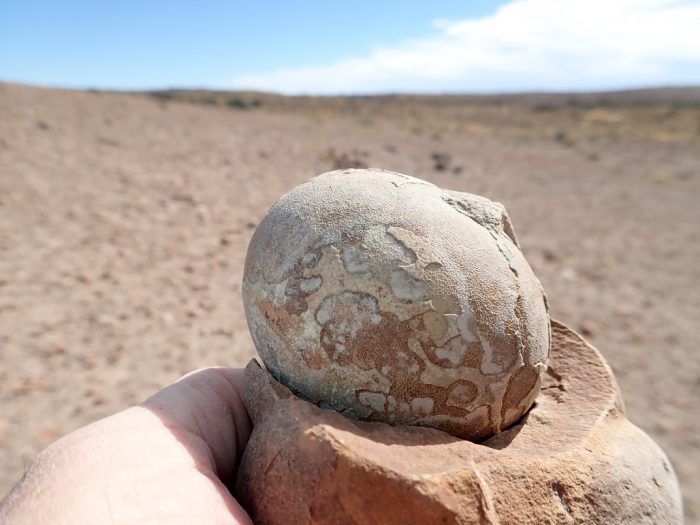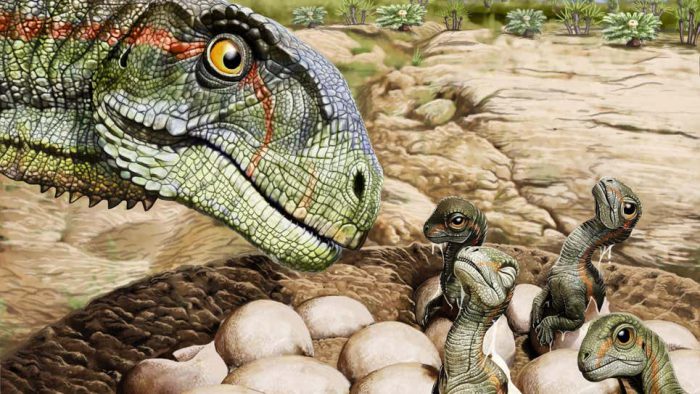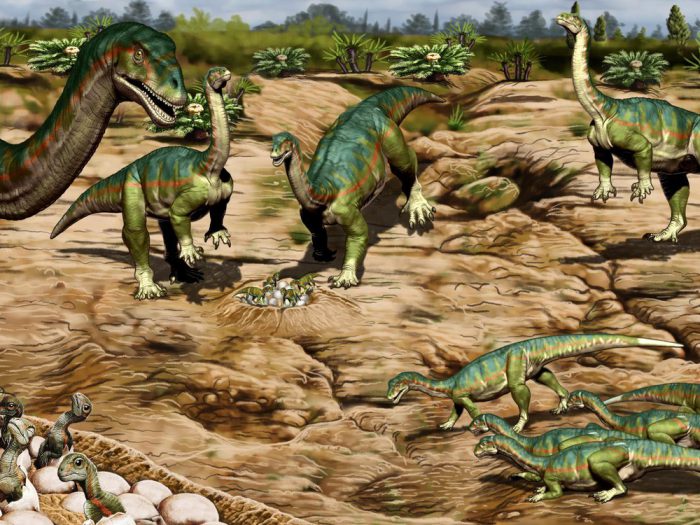When you see a group of similar animals together, it feels like the most natural thing in the world.
Herds. Flocks. Packs. Schools. That's just how many animals behave, right? But for how long has that been true?
One of the things that paleontologists can't do is just assume that what is correct of living things today was correct millions of years ago. They need to try to find evidence—proof—that this was so. That is what makes a collection of discoveries in Patagonia—the southern region of South America—so exciting. Researchers have unearthed exactly the kind of proof they needed.
The oldest known evidence of dinosaur herds, dating back 192 million years!
Bones and eggs

An example of one of the dozens of fossilized Mussaurus eggs found at this site. (Roger Smith via Scientific Reports)
The dinosaur in question is a Jurassic period herbivore named Mussaurus patagonicus. It was an early sauropodomorph—its descendants would go on to become the largest land animals the world has ever known. Though Mussaurus was not that big, there was something large about these animals.
Their groups!
For almost 20 years, a group of paleontologists led by Argentinian researchers Diego Pol have been digging in what they call a Jurassic graveyard of Mussaurus. In a newly released study, they provide evidence of over 100 fossilized eggs and the bones of 80 different Mussaurus. These range from unhatched embryos to newborns to juveniles to adults! Entire families, all grouped together.
It truly is a dinosaur herd!
A new way of life

"We got your backs, little guys!" (Jorge Gonzalez)
Finding such evidence is thrilling. It is a snapshot of not just how an ancient animal looked, but how it lived and interacted with others of its species. Pol believes that these creatures came to understand the benefits of living in large groups for protection as they got bigger as animals. Because while a full-grown Mussaurus was big—about 6 metres (20 feet) long and weighing 1,000 kg (2,200 pounds), its young were small and defenseless.
"[Youth] is a time when [Mussaurus] need to eat quite a lot to grow," Pol said in an interview with Live Science, "but they don't have the size to be able to defend themselves and they don't have the expertise and the knowledge. So, living in a herd actually protects you during those very vulnerable, fragile stages of your life."
Of course, these reasons for living in a herd are something that we see everyday in large herbivores, such as wildebeest, deer, musk oxen, and more. It's an easy thing to assume that ancient animals would do the same. But to have real proof of it? That's what being a paleontologist is all about!
You can check out scenes from the dig through this video!
 Come together! Dinosaurs like Mussaurus used herds for protection against predators. (Jorge Gonzalez)
Come together! Dinosaurs like Mussaurus used herds for protection against predators. (Jorge Gonzalez)










Bruh this is Dino-tasically cool! 😀 😀 😀 😀 😀 😀 😀 😀 😀 😀 😀 😀 😀 😀 😀 😀